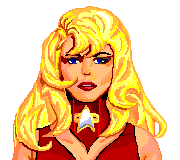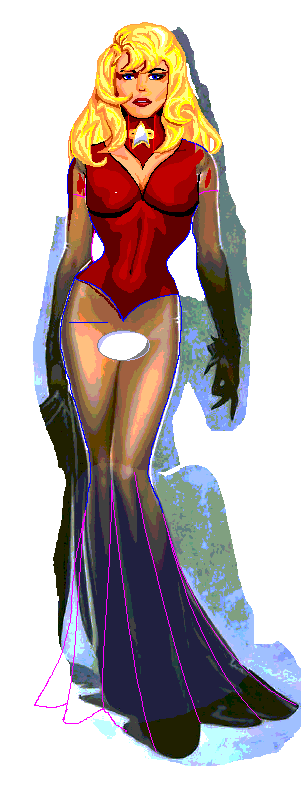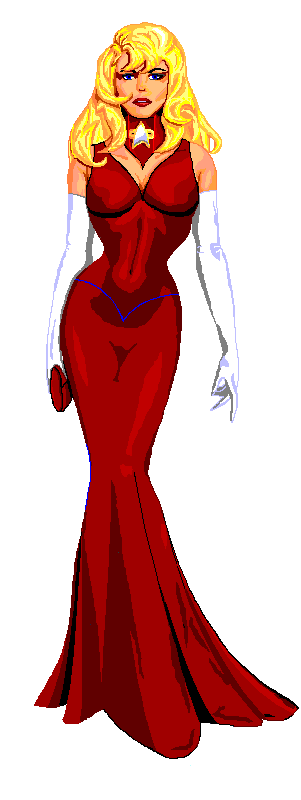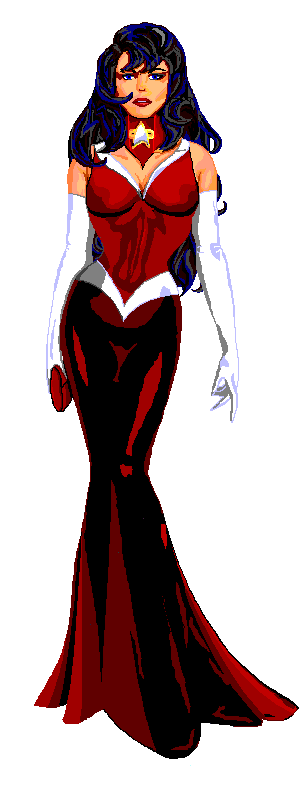The next step is to start adding clothes. I found a series of compatible red shades and used that for Xora's primary outfits in the first Xora story. This shows the advantage of the limited color palette in gifs (or 256 color bitmaps, or other color-constrained options) where color replacements are easy. I could start with red and change quickly to blue (as I eventually did). I usually use three or four colors shades for each principal color, capturing the tones of the original in whatever color I want. Lighter flesh tones, for example, from Olivia's 'natural' original, become lighter red tones and now look like tight clothes.
|
The second image shows the completed gown, but it clearly needed some work. The long skirt is too dull in the intermediate red, and the whole gown needed a few accents.
Notice that shape is added, along with an illusion of tightness, by showing anatomical detail (abdomen muscles) that are copied directly from the original artwork. (Don't remember? Then go here then hit your back button to return.) Of course, this isn't really right, because a corset would smooth out those details, not reveal them, but they provide the required illusion. Gee, that sounds like, 'artistic license.'
Other elements of the outfit, like the high collar, are actually from Lissa's orginal symbiont story. And despite the shapeliness of Olivia's model, Lissa made the point that the symbionts like corsets, so Xora's waist needed a bit of help.
Or maybe I just like tight clothes.
|
In the third image, I made the skirt of the gown a bit darker. That actually leaves a lot of it black, but the mind sees that as a combination of very dark red and even darker shadows, providing the illusion of contour even within a single color. At least to me, it doesn't look as 'flat' as the first pass.
I also changed her hair to black (color replacement) at this stage, and made it longer. (Did you notice it was longer?)
Other features, like her white gloves, are done the same way. The original flesh tones might have 20 colors, some of which are surprising and not much like skin. Draw over those areas, smoothing them into three or four regions of uniform color, then color replace with (in this case) white and grays. Notice that in the original (left image) Olivia's model had something in her right hand, obscuring her fingers. Rather than invent a hand, I just made a clutch purse that hid the same things.
|








